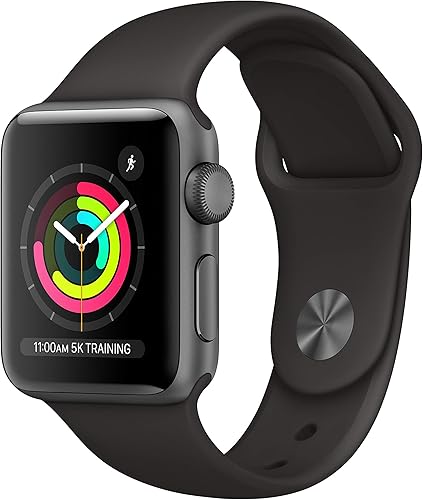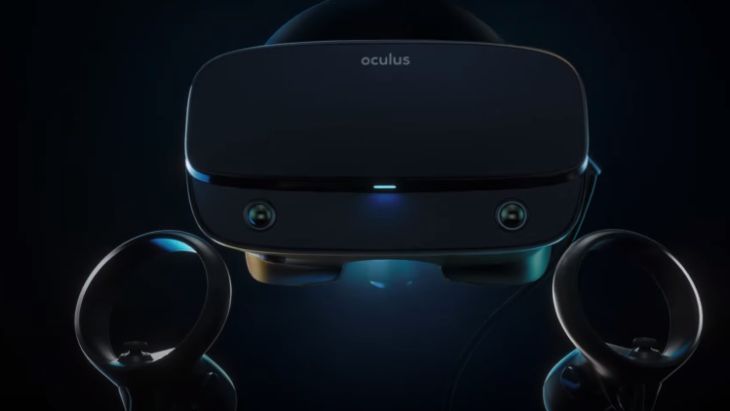The best smartwatches do more than alert you if you receive a call or text message. All in one: a fitness tracker for staying healthy, a digital wallet, and in some cases, a phone, even if your smartphone is not nearby.
Smartwatches have gone beyond fitness tracking, now offering health features that can save your life. In case of a fall, they can detect elevated heart rate alerts and automatically connect you to emergency services. A few models also provide blood oxygen (SpO2) readings and electrocardiograms. The former detects signs of atrial fibrillation, while the latter is an indicator of respiratory health.
However, the best smartwatches do all these things better than the rest. Some phones have huge numbers of apps you can download, while others have batteries that last only a few days while others can last nearly a week. Of course there’s style: The best smartwatches can be customized, from their straps to their faces, to best fit your personality.
Check out our smartwatch buying guide for more tips on finding the best wearable for you, as well as the best smartwatches below.
What is The Best Smartwatch?
Having tested dozens of smartwatches, our top pick is the Apple Watch Series 7 ($399), which builds on years of health features and communications upgrades and adds a brighter screen, thinner display borders, and faster charging. We’ve played with it a little bit and can share our initial thoughts (hands-on) in our Apple Watch 7 review.
Also worth checking out is the Apple Watch 3 ($199), although the Apple Watch SE ($279) is a better option. It lacks many high-end health features and an always-on display, but it still provides a compass, fall detection, and GPS.
The Galaxy Watch 4 ($249/$349) is the best Android smartwatch to compete with Apple Watch. It offers two different designs, and yes, one of them features the rotating bezel. With the latest smartwatch, you can tell your body’s composition for the first time thanks to Google Wear OS software.
Fitbit’s Sense smartwatch ($329) is the best smartwatch available. It gives you a well-rounded view of your body rather than requiring you to self-administer readings and tests. Read on for more smartwatch recommendations.
The 10 Best Smartwatch Reviews
Apple Watch Series 7 GPS

Apple Watch 7 is the best Apple Watch to date. Although there is not much difference between the Apple Watch 6 and Apple Watch 7, it does have a larger display in the new Apple Watch 7 sizes.
In addition to the large screen, the Apple Watch is now available in 41mm and 45mm versions. The seventh-generation Apple has a full QWERTY keyboard and some exclusive watch faces.
Although we would like the Apple Watch to have a longer battery life, the Series 7 does benefit from faster charging. The device can be fully charged in about an hour, allowing you to spend less time tethered to the new USB-C to Magnetic cable and more time on the go.
This is the best smartwatch if you want to work out, answer calls from your wrist, or use the best Apple Watch apps. However, you must have an iPhone.
Pros
- Larger display
- Brighter always-on mode
- QWERTY keyboard
- Comes with USB-C magnetic charger
Cons
- Still just 18-hour battery life
Samsung Electronics Galaxy Smartwatch

As the best smartwatch for Android, the Samsung Galaxy Watch 4 is our second choice among the best smartwatches. In its latest lineup, Samsung ditches the ‘Active’ brand to present a sporty-looking Galaxy Watch 4 as its flagship (starting at $249.99) and a more luxurious Galaxy Watch Classic (starting at $349.99).
With a 3-in-1 health sensor, the Galaxy Watch 4 measures heart rate, takes ECGs, and reads body composition. In addition to its Wear OS features, it still pays homage to Tizen, making it the ideal accessory for Samsung phones. Some features of the Galaxy Watch 4 are exclusive to Samsung users, so not all Android users will be able to use them.
Galaxy Watch 4 has an inconsistent battery life, but as long as you don’t mind a daily charge, you’ll enjoy on-board GPS, an always-on display, excellent sleep tracking and more.
Pros
- Slim design and fun watch faces
- Improved Wear OS software
- Body composition analysis
Cons
- Inconsistent battery life
Fitbit Sense Advanced Smartwatch

Fitbit’s Sense smartwatch offers more advanced health features than the Versa line of smartwatches. In addition to having an FDA-approved ECG sensor and blood oxygen reading, the Sense can also measure skin temperature and electrodermal activity.
Fitbit’s Sense works with both iOS and Android, and features an on-board GPS, a native app store, Alexa functionality, and more. The Fitbit Sense shows that we can take a holistic look at our health with Fitbit devices like the Fitbit Sense.
Pros
- Attractive
- Long battery life
- Comprehensive fitness/health features
Cons
- No Spotify storage
Apple Gold Aluminum Case with Starlight

Apple Watch SE is a hybrid between the Apple Watch Series 5 (which has since been discontinued) and Apple Watch Series 3. Even though it lacks all the features of the Series 6, the $279 smartwatch stands out for its fast chip and safety features. Despite offering an LTE option, it is a great choice for anyone interested in trying out Family Setup.
Choosing between the Apple Watch 6 and the Apple Watch SE will boil down to whether you want to spend an extra $120 for a brighter display, an ECG monitor, and a SpO2 monitor. Even if those tools aren’t a deal-breaker for you, the SE is a highly capable iPhone option.
Pros
- Classic design
- Huge app library
- Large screen
Cons
- No always-on display
- No ECG
SAMSUNG Galaxy Smart Watch

Despite being replaced by the Galaxy Watch 4, the Samsung Galaxy Watch 3 is still available and remains one of the most stylish smartwatches available. There are two sizes, as well as an LTE version. The rotating bezel makes it easy to navigate the Galaxy Watch 3’s interface, and you can customize the display with thousands of watch faces.
While the Galaxy Watch 3 has a shorter battery life than the original Samsung Galaxy Watch, it adds more music storage and FDA-approved ECG tracking.
With Samsung Pay, you’ll be able to make contactless payments, and you’ll get some fitness features as well. Our comparison of the Samsung Galaxy Watch 4 and the Samsung Galaxy Watch 3 should help you decide which model is right for you.
Pros
- Slimmer design than the original
- Physical rotating bezel is back
- FDA-approved ECG readings
Cons
- Shorter battery life than original
Fitbit Versa 3 Health & Fitness Smartwatch

The Fitbit Versa 3, which is the next-generation of the popular Fitbit Versa 2, is the best smartwatch for those interested in advanced sleep tracking. The Versa 3’s standout feature is its built-in GPS. Now even when you leave your phone at home, your Versa can (finally) track your location during outdoor exercise. The larger, curvier display is also a plus.
Plus, the Versa 3 now offers Active Zone Minutes, a great motivational workout feature. Originally introduced with the Fitbit Charge 4 and now a standard Fitbit feature, Active Zone Minutes monitors the amount of time you spend exercising in fat-burning, cardio or peak heart-rate zones.
Each week, aim to earn the AHA’s and WHO’s recommended 150 Active Zone Minutes. With the Fitbit Versa 3, you can make phone calls and speak to voice assistants for assistance, but you can only use one at a time. Confused between the Fitbit Sense and Versa? Our Fitbit Versa 3 vs. Fitbit Sense comparison.
Pros
- Good battery life
- Custom training programs (with subscription)
- Great sleep analysis
Cons
- Can only use one voice assistant at once
SAMSUNG Galaxy Watch Active 2 Smart Watch

Samsung Galaxy Watch 4 vs. Galaxy Watch Active 2: The Active 2 is still worth buying, especially when you find it on sale. Samsung’s watch is compatible with any smartphone and features GPS, heart rate monitoring, and LTE. Additionally, it can track your activity and sleep. (It’s far better at the former task than the latter.)
Whether you get the 40mm or 44mm version, the circular design of Galaxy Watch Active 2 is visually appealing. Samsung’s Tizen operating system powers this watch, which has other useful features, such as Samsung Pay, Spotify onboard music, and heart health monitoring. This includes an ECG feature, which is usually reserved for more expensive models.
Pros
- Offline Spotify storage
- Gorgeous design
- Works with iOS and Android
Cons
- Sleep-tracking needs some work
Apple Watch 3 Space Gray Aluminum Case

Apple Watch Series 3 starts at $199, making it a more affordable smartwatch option than the Series 6 and SE. It’s smaller, the bezels are thicker, and the ECG and SpO2 readings aren’t available, but it’s still a good choice for the price.
Compared to the Apple Watch 6 and the Apple Watch 3 or the Apple Watch SE and the Apple Watch 3, you don’t sacrifice much for the older version’s lower price. In addition to the heart rate monitor, GPS, and 8GB of storage, you also get offline support for Apple Music playlists.
If you like to track your swims, this watch is also water-resistant. It offers many of the same software features found in the Apple Watch Series 6 as well. Find out what benefits Apple’s smartwatch offers over Fitbit’s in our Fitbit Versa 3 vs. Apple Watch 3 comparison.
Pros
- Improved fitness-tracking
- Faster Siri
- Apple Music streaming (with LTE model)
Cons
- No always-on display
- No fall detection
Garmin Vivoactive GPS Smartwatch

Garmin has taken the best of its Vivoactive 3, the best smartwatch for fitness, and made it even better with the $349 Vivoactive 4 and 4S. Garmin Pay and music storage are included out of the box (instead of having to buy them separately like with the Vivoactive 3). It comes in two sizes, 40mm and 45mm, for a better fit for most people.
Animated on-screen workouts for yoga and Pilates are also available on the Vivoactive 4. With a new pulse oximeter, you can monitor your blood oxygen levels and gain more insight into your sleep patterns. The Vivoactive 4 has all of those features, as well as a 7-day battery life, which makes it our favorite fitness smartwatch.
Pros
- Comes in two sizes
- Built-in music storage with Spotify support
- Two-button navigation
Cons
- Occasional syncing issues
- Convoluted app installation process
Fossil Gen 5 Carlyle Stainless Steel Touchscreen Smartwatch
 Wear OS simply isn’t polished enough to compete with Apple’s or Samsung’s best smartwatches. But if you insist on a Wear OS device, Fossil’s Gen 5 smartwatch is the one to get, thanks to its stylish, sophisticated look.
Wear OS simply isn’t polished enough to compete with Apple’s or Samsung’s best smartwatches. But if you insist on a Wear OS device, Fossil’s Gen 5 smartwatch is the one to get, thanks to its stylish, sophisticated look.
Thanks to 1GB of RAM, the Gen 5 also eliminates the most glaring performance lag we’ve seen in previous Wear OS watches, and customizable battery modes also make this smartwatch worth a look.
Apple Watch and Galaxy Watch Active offer fitness and heart health features. Additionally, Spotify’s app for the Gen 5 cannot store music offline – another disadvantage. However, you might want to consider the Fossil Gen 6 instead. It runs the new Wear OS, but it doesn’t come with LTE.
Pros
- Stylish, premium stainless-steel frame
- More RAM makes a difference
- Customizable battery modes
Cons
- Feels limited compared to Samsung’s and Apple’s smartwatches
- No offline Spotify playback
- Wear OS stutters sometimes
How to Pick the Best Smartwatch for You
Depending on which smartphone you own, you can choose the best smartwatch for you. In order to get an Apple Watch, for example, you must have an iPhone. While Wear OS watches work with both Android and iPhones, you receive fewer features when not connected to an Android device.
The Samsung smartwatches offer the greatest cross-functionality, but even there, Android phone owners will be able to reply to notifications and make and receive phone calls more easily.
Additionally, you need to ensure that the smartwatch fits comfortably on your wrist when picking one. Larger smartwatches – those with cases larger than 44mm – might be too bulky and cumbersome for people with smaller wrists. Our list of the best smartwatches for women might be of help to you if you need features like cycle or pregnancy tracking.
Similarly, you want a smartwatch that matches your style. Despite the Apple Watch having only one shape, you can buy it in a variety of finishes. Samsung offers a few more options, while Wear OS watches, which are made by companies such as Fossil, Skagen, Kate Spade, Moto, Tag Heuer, Diesel, and others, offer many more design options.
For certain fitness goals, smartwatches may be necessary. Check out our guides to the best running watches and best GPS watches.
How We Test The Best Smartwatches
Each new smartwatch is tested to determine its design and comfort. If it isn’t comfortable and stylish enough to take you from an early morning workout to work to a night out, you probably won’t wear it every day. Almost all smartwatches are fitness trackers, so we tested all of their sensors, including step counts, heart rates, and GPS (if applicable).
In order to determine whether the device’s app store is robust enough to be considered a smartwatch, we install apps on the device. If the watch has built-in LTE, we test cellular connectivity and call quality to make sure it can stand on its own without a smartphone nearby.
To ensure you can get through the entire day without charging, we measure battery life using everyday scenarios, including workouts, using apps, and getting notifications.






